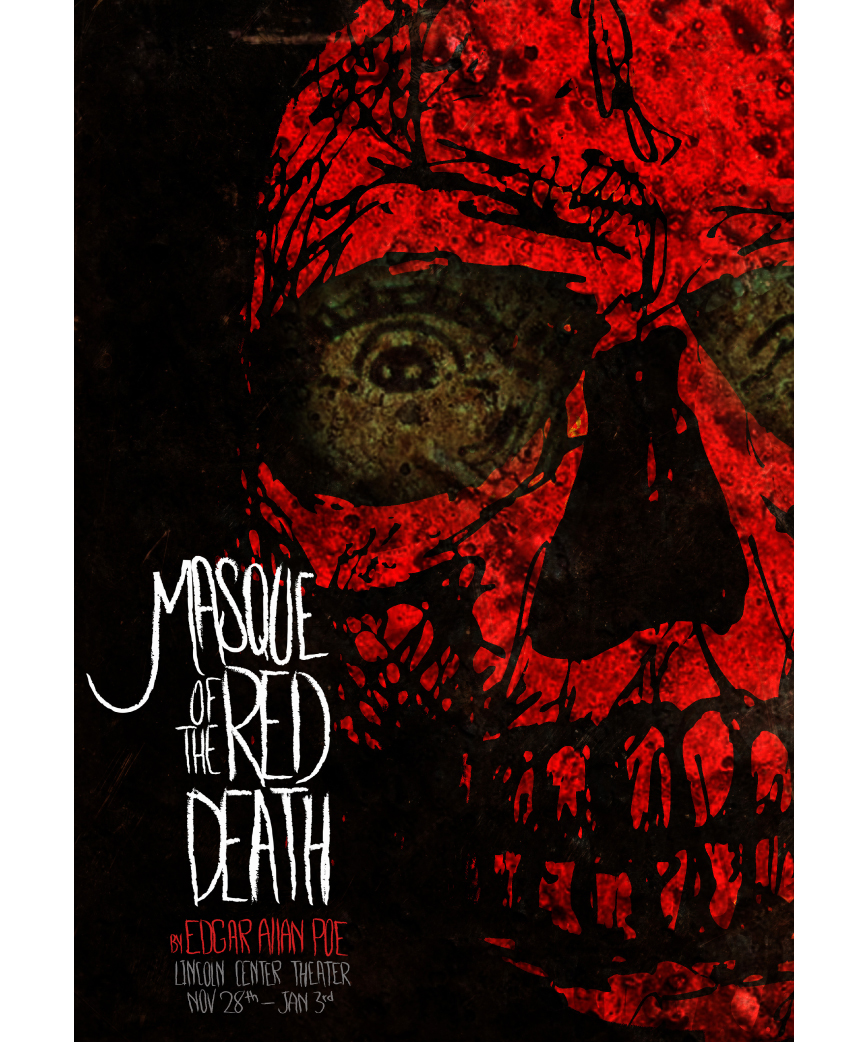
“The Masque of the Red Death” by Edgar Allan Poe tells the tale of Prince Prospero who, when hemorrhagic fever rages through in his kingdom, retreats behind the walls of his castle and hosts a ball for his nobles while they all wait for the disease to burn itself out on the peasantry. The prince has decorated seven party rooms in different colors, including one foreboding room upholstered in black velvet and lit in red. At the stroke of midnight, a masked figure dressed as a victim/personification of the Red Death appears in the midst of their revelry. The Prince orders his couriers to seize him, and when they cower away from the menacing figure, he goes after the specter himself. He drops dead, and when the other guests try to grab the mysterious figure, they discover its costume is empty. One by one, the guests all fall to the red death.
The allegorical story reads very much like a gothic fairy tale. And the moral is clear: those of wealth and privilege can do all they want to insulate themselves from the horrors of the world, but in the end they’ll be just as dead as the huddled masses they disregarded as expendable. The story’s plot is straightforward and compelling enough (I can’t help but imagine an adaptation set in Westlake, TX during an Ebola outbreak) but the story’s real pleasure comes from its nightmarish imagery. For instance, there’s a huge ebony clock in the black room:
Its pendulum swung to and fro with a dull, heavy, monotonous clang; and when the minute-hand made the circuit of the face, and the hour was to be stricken, there came from the brazen lungs of the clock a sound which was clear and loud and deep and exceedingly musical, but of so peculiar a note and emphasis that, at each lapse of an hour, the musicians of the orchestra were constrained to pause, momentarily, in their performance, to hearken to the sound; and thus the waltzers perforce ceased their evolutions; and there was a brief disconcert of the whole gay company; … the giddiest grew pale, and the more aged and sedate passed their hands over their brows as if in confused reverie or meditation.
The language here is rich and vivid. The pendulum with its heavy clang is the very picture and soundtrack of relentlessness. The hour is stricken, just like a victim of a sudden fatal disease. And the clock has not mere chime rods but brazen lungs, as if it were a living entity that boldly interrupts the nobles’ gaiety.
Further, the description of the clock highlights the allegorical/metaphorical nature of the story. What wealthy party host would actually decorate a room so creepily dark that nobody wants to enter it, and on top of that, furnish it with a clock that bongs so intrusively that it bothers the guests every hour? Prince Prospero is portrayed as a jerk, but not the kind who would intentionally make his nobles quite so uncomfortable.
But the clock functions just fine as a metaphor for mortality throughout the story, and the reader intuitively understand that Prospero doesn’t have nearly as much control over his life and fate (represented by the colored rooms of the masque) as he pretends to. (I imagine a modern version of the story wherein Prospero bluffly pretends that he meant for the black room and clock to be there all along but when he’s alone he sends a series of angry texts to his party designer, who replies “What black room? What clock?”) Further, the bonging of the clock represents those uncomfortable little moments of realizing that you’re going to die someday, moments that can be simultaneously tedious and panic-inducing. None of what Poe has done with the clock is terribly subtle to the modern reader’s eye, but it’s memorable and it works.
Leave a Reply
You must be logged in to post a comment.